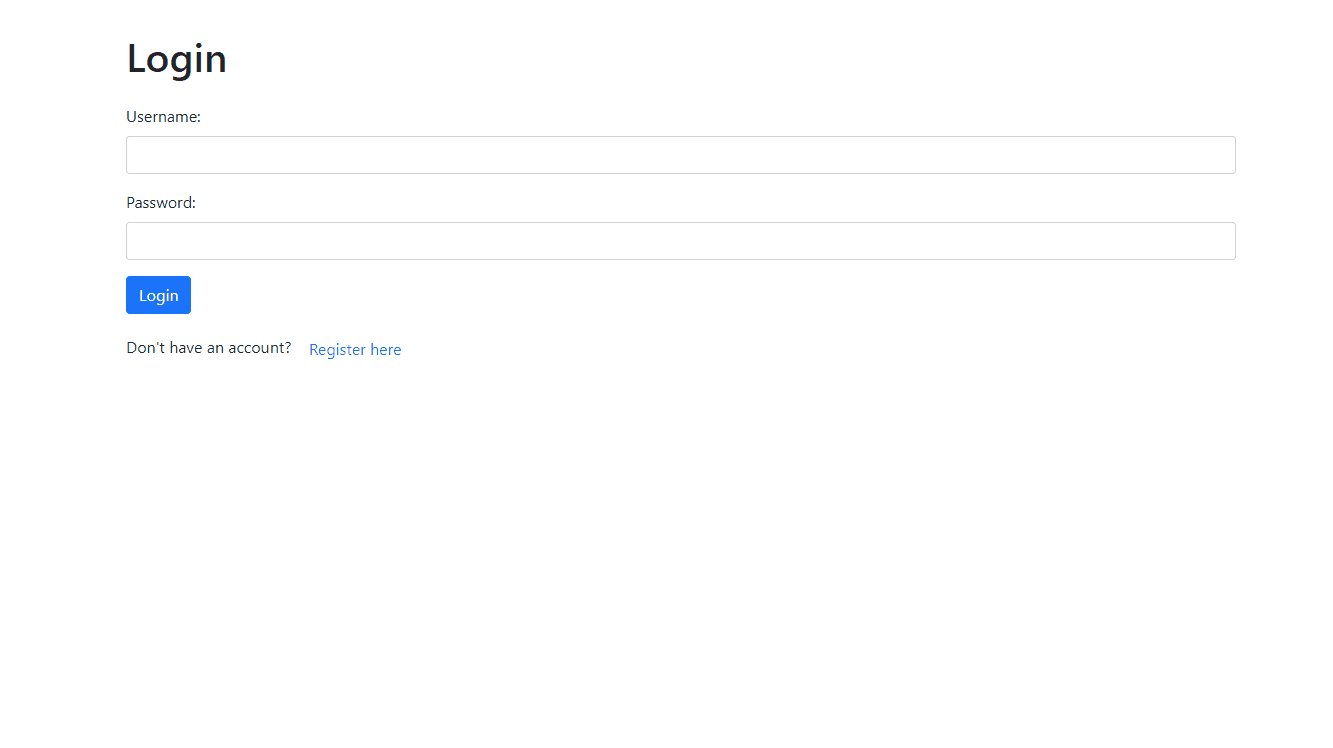作为一名初级程序员,用户中心总得会设计与实现吧
原创引言
用户中心作为一个重要的功能模块,承担着用户身份验证、信息管理和权限控制等多重角色。随着互联网技术的快速发展和用户需求的不断变化,构建一个高效、灵活且安全的用户中心显得尤为重要。本文将深入探讨一个基于 Spring Boot 框架的用户中心实现,涵盖用户信息更新、密码重置、角色管理、用户权限控制以及用户活动日志等功能模块,帮助读者全面了解用户中心的设计与实现过程。
1. 项目准备
1.1 环境搭建
在开始之前,我们需要搭建一个合适的开发环境。以下是项目所需的基本环境和工具:
- Java 11:Spring Boot 2.5及以上版本支持Java 11。
- Spring Boot:使用 Spring Initializr 创建项目,添加以下依赖:
- Spring Web
- Spring Data JPA
- MySQL Driver(或其他数据库驱动)
- Spring Security
- Lombok
- Thymeleaf(用于前端模板)
- 数据库:可以使用 MySQL 或者 H2 数据库来存储用户信息。

1.2 项目结构
我们将项目结构规划为以下几个模块:
src
└── main
├── java
│ └── com.example.usercenter
│ ├── config
│ ├── controller
│ ├── entity
│ ├── repository
│ ├── service
│ └── UserCenterApplication.java
└── resources
├── application.properties
├── templates
└── static2. 数据库设计
在实现用户中心之前,我们需要设计数据库表来存储用户信息、角色和活动日志。以下是一个简单的数据库设计示例:
CREATE TABLE users (
id BIGINT AUTO_INCREMENT PRIMARY KEY,
username VARCHAR(50) NOT NULL UNIQUE,
password VARCHAR(255) NOT NULL,
email VARCHAR(100) NOT NULL UNIQUE,
created_at TIMESTAMP DEFAULT CURRENT_TIMESTAMP,
updated_at TIMESTAMP DEFAULT CURRENT_TIMESTAMP ON UPDATE CURRENT_TIMESTAMP
);
CREATE TABLE roles (
id BIGINT AUTO_INCREMENT PRIMARY KEY,
name VARCHAR(50) NOT NULL UNIQUE
);
CREATE TABLE user_roles (
user_id BIGINT NOT NULL,
role_id BIGINT NOT NULL,
FOREIGN KEY (user_id) REFERENCES users(id),
FOREIGN KEY (role_id) REFERENCES roles(id),
PRIMARY KEY (user_id, role_id)
);
DROP TABLE IF EXISTS `activity_logs`;
CREATE TABLE `activity_logs` (
`id` bigint(20) NOT NULL AUTO_INCREMENT,
`user_id` varchar(255) DEFAULT NULL,
`activity` varchar(255) NOT NULL,
`timestamp` timestamp NOT NULL DEFAULT CURRENT_TIMESTAMP,
PRIMARY KEY (`id`),
KEY `user_id` (`user_id`)
) ENGINE=InnoDB AUTO_INCREMENT=14 DEFAULT CHARSET=utf8mb4;3. 实体类设计
在 entity 包中创建以下实体类:
3.1 User 实体类
package com.example.usercenter.entity;
import lombok.Data;
import javax.persistence.*;
import java.util.Set;
@Data
@Entity
@Table(name = "users")
public class User {
@Id
@GeneratedValue(strategy = GenerationType.IDENTITY)
private Long id;
@Column(nullable = false, unique = true)
private String username;
@Column(nullable = false)
private String password;
@Column(nullable = false, unique = true)
private String email;
@ManyToMany(fetch = FetchType.EAGER)
@JoinTable(
name = "user_roles",
joinColumns = @JoinColumn(name = "user_id"),
inverseJoinColumns = @JoinColumn(name = "role_id")
)
private Set<Role> roles;
// 其他字段和方法...
}3.2 Role 实体类
package com.example.usercenter.entity;
import lombok.Data;
import javax.persistence.*;
import java.util.Set;
@Data
@Entity
@Table(name = "roles")
public class Role {
@Id
@GeneratedValue(strategy = GenerationType.IDENTITY)
private Long id;
@Column(nullable = false, unique = true)
private String name;
@ManyToMany(mappedBy = "roles")
private Set<User> users;
}3.3 ActivityLog 实体类
package com.example.usercenter.entity;
import lombok.Data;
import javax.persistence.*;
import java.time.LocalDateTime;
@Data
@Entity
@Table(name = "activity_logs")
public class ActivityLog {
@Id
@GeneratedValue(strategy = GenerationType.IDENTITY)
private Long id;
private String userId;
private String activity;
private LocalDateTime timestamp;
}4. 数据库操作层
在 repository 包中创建以下接口:
4.1 UserRepository
package com.example.usercenter.repository;
import com.example.usercenter.entity.User;
import org.springframework.data.jpa.repository.JpaRepository;
public interface UserRepository extends JpaRepository<User, Long> {
Optional<User> findByUsername(String username);
}4.2 RoleRepository
package com.example.usercenter.repository;
import com.example.usercenter.entity.Role;
import org.springframework.data.jpa.repository.JpaRepository;
public interface RoleRepository extends JpaRepository<Role, Long> {
Role findByName(String name);
}4.3 ActivityLogRepository
package com.example.usercenter.repository;
import com.example.usercenter.entity.ActivityLog;
import org.springframework.data.jpa.repository.JpaRepository;
import java.util.List;
public interface ActivityLogRepository extends JpaRepository<ActivityLog, Long> {
List<ActivityLog> findByUserId(Long userId);
}5. 服务层
在 service 包中创建以下服务类:
5.1 UserService
package com.example.usercenter.service;
import com.example.usercenter.entity.User;
import com.example.usercenter.repository.UserRepository;
import org.springframework.beans.factory.annotation.Autowired;
import org.springframework.security.crypto.bcrypt.BCryptPasswordEncoder;
import org.springframework.stereotype.Service;
import java.util.List;
@Service
public class UserService {
@Autowired
private UserRepository userRepository;
private BCryptPasswordEncoder passwordEncoder = new BCryptPasswordEncoder();
public User register(User user) {
user.setPassword(passwordEncoder.encode(user.getPassword()));
return userRepository.save(user);
}
public User findByUsername(String username) {
return userRepository.findByUsername(username).get();
}
public User updateUser(User user) {
return userRepository.save(user);
}
public void resetPassword(User user, String newPassword) {
user.setPassword(passwordEncoder.encode(newPassword));
userRepository.save(user);
}
public User findById(Long id) {
return userRepository.findById(id).get();
}
// 新增查询所有用户的方法
public List<User> findAll() {
return userRepository.findAll();
}
}5.2 RoleService
package com.example.usercenter.service;
import com.example.usercenter.entity.Role;
import com.example.usercenter.repository.RoleRepository;
import org.springframework.beans.factory.annotation.Autowired;
import org.springframework.stereotype.Service;
@Service
public class RoleService {
@Autowired
private RoleRepository roleRepository;
public Role findByName(String name) {
return roleRepository.findByName(name);
}
public Role saveRole(Role role) {
return roleRepository.save(role);
}
}5.3 ActivityLogService
package com.example.usercenter.service;
import com.example.usercenter.entity.ActivityLog;
import com.example.usercenter.entity.User;
import com.example.usercenter.repository.ActivityLogRepository;
import org.springframework.beans.factory.annotation.Autowired;
import org.springframework.security.core.userdetails.UserDetails;
import org.springframework.stereotype.Service;
import java.time.LocalDateTime;
import java.util.List;
@Service
public class ActivityLogService {
@Autowired
private ActivityLogRepository activityLogRepository;
public void logActivity(UserDetails userDetails, String activity) {
ActivityLog log = new ActivityLog();
log.setUserId(userDetails.getUsername());
log.setActivity(activity);
log.setTimestamp(LocalDateTime.now());
activityLogRepository.save(log);
}
public List<ActivityLog> findAllActivityLogs() {
return activityLogRepository.findAll();
}
}6. 安全配置
在 config 包中创建 WebSecurityConfig 类,配置 Spring Security:
package com.example.usercenter.config;
import com.example.usercenter.entity.User;
import com.example.usercenter.service.UserService;
import org.springframework.beans.factory.annotation.Autowired;
import org.springframework.context.annotation.Bean;
import org.springframework.context.annotation.Configuration;
import org.springframework.security.config.annotation.authentication.builders.AuthenticationManagerBuilder;
import org.springframework.security.config.annotation.web.builders.HttpSecurity;
import org.springframework.security.config.annotation.web.configuration.EnableWebSecurity;
import org.springframework.security.config.annotation.web.configuration.WebSecurityConfigurerAdapter;
import org.springframework.security.core.userdetails.UsernameNotFoundException;
import org.springframework.security.crypto.bcrypt.BCryptPasswordEncoder;
import org.springframework.security.crypto.password.PasswordEncoder;
@Configuration
@EnableWebSecurity
public class WebSecurityConfig extends WebSecurityConfigurerAdapter {
@Autowired
private UserService userService;
@Override
protected void configure(AuthenticationManagerBuilder auth) throws Exception {
auth.userDetailsService(username -> {
User user = userService.findByUsername(username);
if (user != null) {
return org.springframework.security.core.userdetails.User
.withUsername(user.getUsername())
.password(user.getPassword())
.roles("USER")
.build();
} else {
throw new UsernameNotFoundException("User not found");
}
}).passwordEncoder(passwordEncoder());
}
@Bean
public PasswordEncoder passwordEncoder() {
return new BCryptPasswordEncoder();
}
@Override
protected void configure(HttpSecurity http) throws Exception {
http.csrf().disable()
.authorizeRequests()
.antMatchers("/register", "/login").permitAll() // 允许所有用户访问注册和登录
.anyRequest().authenticated() // 其他请求需要认证
.and()
.formLogin()
.loginPage("/login") // 自定义登录页面
.defaultSuccessUrl("/users", true) // 登录成功后重定向到 /users
.permitAll()
.and()
.logout()
.permitAll();
}
}7. 控制层
在 controller 包中创建用户控制器,处理用户请求。
7.1 UserController
package com.example.usercenter.controller;
import com.example.usercenter.entity.ActivityLog;
import com.example.usercenter.entity.User;
import com.example.usercenter.service.ActivityLogService;
import com.example.usercenter.service.UserService;
import org.springframework.beans.factory.annotation.Autowired;
import org.springframework.security.core.annotation.AuthenticationPrincipal;
import org.springframework.security.core.userdetails.UserDetails;
import org.springframework.stereotype.Controller;
import org.springframework.ui.Model;
import org.springframework.web.bind.annotation.GetMapping;
import org.springframework.web.bind.annotation.ModelAttribute;
import org.springframework.web.bind.annotation.PostMapping;
import org.springframework.web.bind.annotation.RequestParam;
import java.util.List;
@Controller
public class UserController {
@Autowired
private UserService userService;
@Autowired
private ActivityLogService activityLogService;
@GetMapping("/register")
public String showRegisterForm(Model model) {
model.addAttribute("user", new User());
return "register";
}
@PostMapping("/register")
public String registerUser(@ModelAttribute User user) {
userService.register(user);
return "redirect:/login";
}
@GetMapping("/login")
public String showLoginForm() {
return "login";
}
@GetMapping("/update")
public String showUpdateForm(@RequestParam Long id, Model model) {
User user = userService.findById(id);
model.addAttribute("user", user);
return "update";
}
@PostMapping("/update")
public String updateUser(@ModelAttribute User user, @AuthenticationPrincipal UserDetails userDetails) {
userService.updateUser(user);
activityLogService.logActivity(userDetails, "Updated user information");
return "redirect:/profile";
}
@GetMapping("/reset-password")
public String showResetPasswordForm() {
return "reset-password";
}
@PostMapping("/reset-password")
public String resetPassword(@RequestParam Long id, @RequestParam String newPassword, @AuthenticationPrincipal UserDetails userDetails) {
User user = userService.findById(id);
userService.resetPassword(user, newPassword);
activityLogService.logActivity(userDetails, "Reset password");
return "redirect:/login";
}
@GetMapping("/profile")
public String userProfile(Model model) {
// 获取当前用户信息并展示
return "profile";
}
// 新增用户列表方法
@GetMapping("/users")
public String listUsers(Model model, @AuthenticationPrincipal UserDetails userDetails) {
// 记录用户登录活动
activityLogService.logActivity(userDetails, "LOGIN");
// 获取用户列表
List<User> users = userService.findAll();
model.addAttribute("users", users);
return "user-list";
}
@PostMapping("/logout")
public String logout(@AuthenticationPrincipal UserDetails userDetails) {
// 记录用户注销活动
activityLogService.logActivity(userDetails, "LOGOUT");
return "redirect:/login"; // 注销后重定向到登录页面
}
@GetMapping("/activity-logs")
public String listActivityLogs(Model model) {
List<ActivityLog> logs = activityLogService.findAllActivityLogs();
model.addAttribute("logs", logs);
return "activity-log-list"; // 返回活动日志列表页面
}
}启动成功

8. 前端页面
在 resources/templates 目录下创建相应的 Thymeleaf 模板页面:
8.1 register.html
<!DOCTYPE html>
<html xmlns:th="http://www.thymeleaf.org">
<head>
<title>Register</title>
</head>
<body>
<h1>Register</h1>
<form action="#" th:action="@{/register}" th:object="${user}" method="post">
<label for="username">Username:</label>
<input type="text" id="username" th:field="*{username}" required />
<label for="password">Password:</label>
<input type="password" id="password" th:field="*{password}" required />
<label for="email">Email:</label>
<input type="email" id="email" th:field="*{email}" required />
<button type="submit">Register</button>
</form>
</body>
</html>8.2 login.html
<!DOCTYPE html>
<html xmlns:th="http://www.thymeleaf.org">
<head>
<title>Login</title>
</head>
<body>
<h1>Login</h1>
<form action="#" th:action="@{/login}" method="post">
<label for="username">Username:</label>
<input type="text" id="username" name="username" required />
<label for="password">Password:</label>
<input type="password" id="password" name="password" required />
<button type="submit">Login</button>
</form>
</body>
</html>8.3 update.html
<!DOCTYPE html>
<html xmlns:th="http://www.thymeleaf.org">
<head>
<title>Update User</title>
</head>
<body>
<h1>Update User</h1>
<form action="#" th:action="@{/update}" th:object="${user}" method="post">
<label for="username">Username:</label>
<input type="text" id="username" th:field="*{username}" required />
<label for="email">Email:</label>
<input type="email" id="email" th:field="*{email}" required />
<button type="submit">Update</button>
</form>
</body>
</html>8.4 reset-password.html
<!DOCTYPE html>
<html xmlns:th="http://www.thymeleaf.org">
<head>
<title>Reset Password</title>
</head>
<body>
<h1>Reset Password</h1>
<form action="#" th:action="@{/reset-password}" method="post">
<label for="newPassword">New Password:</label>
<input type="password" id="newPassword" name="newPassword" required />
<button type="submit">Reset Password</button>
</form>
</body>
</html>访问一下 : http://localhost:8080/login; 一个简单且丑陋的登录界面就此完成了,让我们继续丰富一些UI的样式。

为了美化用户中心的UI界面,我们可以考虑引入一些流行的第三方UI库。以下是一些推荐的UI库及其集成步骤:
9.引入第三方UI库
以下是几个推荐的UI库:
- Bootstrap:一个强大的前端框架,用于快速开发响应式网站。
- Materialize CSS:基于Material Design风格的CSS框架。
- Bulma:一个现代的CSS框架,采用Flexbox布局。
- Ant Design:一个企业级的UI设计语言和React组件库。
下面我们以Bootstrap为例,展示如何将其集成到我们的Spring Boot项目中。
10. 集成Bootstrap
10.1 添加Bootstrap依赖
在 src/main/resources/templates 目录下的 HTML 模板文件中,我们可以通过CDN链接引入Bootstrap。打开 register.html、login.html、update.html 和 reset-password.html 文件,添加以下代码到 <head> 部分:
<!-- Bootstrap CSS -->
<link href="https://stackpath.bootstrapcdn.com/bootstrap/4.5.2/css/bootstrap.min.css" rel="stylesheet">10.2 修改HTML模板
下面是美化后的HTML模板示例,使用Bootstrap的样式类来增强界面。
register.html
<!DOCTYPE html>
<html xmlns:th="http://www.thymeleaf.org">
<head>
<title>Register</title>
<link href="https://stackpath.bootstrapcdn.com/bootstrap/4.5.2/css/bootstrap.min.css" rel="stylesheet">
</head>
<body>
<div class="container mt-5">
<h1>Register</h1>
<form action="#" th:action="@{/register}" th:object="${user}" method="post" class="mt-4">
<div class="form-group">
<label for="username">Username:</label>
<input type="text" class="form-control" id="username" th:field="*{username}" required />
</div>
<div class="form-group">
<label for="password">Password:</label>
<input type="password" class="form-control" id="password" th:field="*{password}" required />
</div>
<div class="form-group">
<label for="email">Email:</label>
<input type="email" class="form-control" id="email" th:field="*{email}" required />
</div>
<button type="submit" class="btn btn-primary">Register</button>
</form>
</div>
</body>
</html>login.html
<!DOCTYPE html>
<html xmlns:th="http://www.thymeleaf.org">
<head>
<title>Login</title>
<link href="https://stackpath.bootstrapcdn.com/bootstrap/4.5.2/css/bootstrap.min.css" rel="stylesheet">
</head>
<body>
<div class="container mt-5">
<h1>Login</h1>
<form action="#" th:action="@{/login}" method="post" class="mt-4">
<div class="form-group">
<label for="username">Username:</label>
<input type="text" class="form-control" id="username" name="username" required />
</div>
<div class="form-group">
<label for="password">Password:</label>
<input type="password" class="form-control" id="password" name="password" required />
</div>
<button type="submit" class="btn btn-primary">Login</button>
</form>
<div class="mt-3">
<span>Don't have an account? </span>
<a class="btn btn-link" th:href="@{/register}">Register here</a>
</div>
</div>
</body>
</html>update.html
<!DOCTYPE html>
<html xmlns:th="http://www.thymeleaf.org">
<head>
<title>Update User</title>
<link href="https://stackpath.bootstrapcdn.com/bootstrap/4.5.2/css/bootstrap.min.css" rel="stylesheet">
</head>
<body>
<div class="container mt-5">
<h1>Update User</h1>
<form action="#" th:action="@{/update}" th:object="${user}" method="post" class="mt-4">
<div class="form-group">
<label for="username">Username:</label>
<input type="text" class="form-control" id="username" th:field="*{username}" required />
</div>
<div class="form-group">
<label for="email">Email:</label>
<input type="email" class="form-control" id="email" th:field="*{email}" required />
</div>
<button type="submit" class="btn btn-primary">Update</button>
</form>
</div>
</body>
</html>reset-password.html
<!DOCTYPE html>
<html xmlns:th="http://www.thymeleaf.org">
<head>
<title>Reset Password</title>
<link href="https://stackpath.bootstrapcdn.com/bootstrap/4.5.2/css/bootstrap.min.css" rel="stylesheet">
</head>
<body>
<div class="container mt-5">
<h1>Reset Password</h1>
<form action="#" th:action="@{/reset-password}" method="post" class="mt-4">
<div class="form-group">
<label for="newPassword">New Password:</label>
<input type="password" class="form-control" id="newPassword" name="newPassword" required />
</div>
<button type="submit" class="btn btn-primary">Reset Password</button>
</form>
</div>
</body>
</html>
增加登录成功后的用户列表查询功能,并相应修改 WebSecurityConfig 的跳转配置:
11.创建用户列表模板
在 resources/templates 目录下创建 user-list.html 文件,用于展示用户列表。
11.1user-list.html
<!DOCTYPE html>
<html xmlns:th="http://www.thymeleaf.org">
<head>
<title>User List</title>
<link href="https://stackpath.bootstrapcdn.com/bootstrap/4.5.2/css/bootstrap.min.css" rel="stylesheet">
</head>
<body>
<div class="container mt-5">
<h1>User List</h1>
<table class="table table-bordered mt-4">
<thead>
<tr>
<th>ID</th>
<th>Username</th>
<th>Email</th>
<th>Actions</th>
</tr>
</thead>
<tbody>
<tr th:each="user : ${users}">
<td th:text="${user.id}"></td>
<td th:text="${user.username}"></td>
<td th:text="${user.email}"></td>
<td>
<a class="btn btn-info btn-sm" th:href="@{/update/{id}(id=${user.id})}">Edit</a>
<a class="btn btn-danger btn-sm" th:href="@{/delete/{id}(id=${user.id})}">Delete</a>
</td>
</tr>
</tbody>
</table>
<a class="btn btn-info btn-sm" th:href="@{/activity-logs}">日志列表</a>
<a class="btn btn-primary" th:href="@{/logout}">Logout</a>
</div>
</body>
</html>11.2 补充代码概览
以下是修改后的代码片段概览:
- UserController.java(更新后的控制器):
// 新增用户列表方法
@GetMapping("/users")
public String listUsers(Model model) {
List<User> users = userService.findAll();
model.addAttribute("users", users);
return "user-list";
}- UserService.java(增加用户查询方法):
// 新增查询所有用户的方法
public List<User> findAll() {
return userRepository.findAll();
}- WebSecurityConfig.java(更新跳转逻辑):
http.csrf().disable()
.authorizeRequests()
.antMatchers("/register", "/login").permitAll() // 允许所有用户访问注册和登录
.anyRequest().authenticated() // 其他请求需要认证
.and()
.formLogin()
.loginPage("/login") // 自定义登录页面
.defaultSuccessUrl("/users", true) // 登录成功后重定向到 /users
.permitAll()
.and()
.logout()
.permitAll();12. 用户活动日志
为了记录用户的活动,我们在 ActivityLogService 中已经添加了记录日志的方法。通过将每个用户的关键操作记录到数据库中,管理员可以跟踪用户的活动。这不仅有助于安全审计,还可以用于分析用户行为。
12.1 更新控制器
在用户登录、注销和其他关键操作的控制器中调用 ActivityLogService 的 logActivity 方法,以记录用户的活动。例如,在 UserController 中更新相应的方法:
package com.example.usercenter.controller;
import com.example.usercenter.service.ActivityLogService;
import org.springframework.beans.factory.annotation.Autowired;
import org.springframework.security.core.annotation.AuthenticationPrincipal;
import org.springframework.stereotype.Controller;
import org.springframework.ui.Model;
import org.springframework.web.bind.annotation.GetMapping;
import org.springframework.web.bind.annotation.PostMapping;
@Controller
public class UserController {
@Autowired
private ActivityLogService activityLogService;
// 登录成功后的重定向
@GetMapping("/users")
public String listUsers(Model model, @AuthenticationPrincipal User user) {
// 记录用户登录活动
activityLogService.logActivity(user.getUsername(), "LOGIN");
// 获取用户列表
List<User> users = userService.findAllUsers();
model.addAttribute("users", users);
return "user-list";
}
@PostMapping("/logout")
public String logout(@AuthenticationPrincipal User user) {
// 记录用户注销活动
activityLogService.logActivity(user.getUsername(), "LOGOUT");
return "redirect:/login"; // 注销后重定向到登录页面
}
// 其他方法...
}12.2 创建活动日志查询功能
为了方便管理员查看活动日志,我们可以添加一个新的控制器方法来显示活动日志列表。
@GetMapping("/activity-logs")
public String listActivityLogs(Model model) {
List<ActivityLog> logs = activityLogService.findAllActivityLogs();
model.addAttribute("logs", logs);
return "activity-log-list"; // 返回活动日志列表页面
}同时,更新 ActivityLogService 添加 findAllActivityLogs 方法:
public List<ActivityLog> findAllActivityLogs() {
return activityLogRepository.findAll();
}12.3 创建活动日志列表模板
在 resources/templates 目录下创建 activity-log-list.html 文件,用于展示活动日志。
activity-log-list.html
<!DOCTYPE html>
<html xmlns:th="http://www.thymeleaf.org">
<head>
<title>用户活动日志</title>
<link href="https://stackpath.bootstrapcdn.com/bootstrap/4.5.2/css/bootstrap.min.css" rel="stylesheet">
</head>
<body>
<div class="container mt-5">
<h1>用户活动日志</h1>
<table class="table table-bordered mt-4">
<thead>
<tr>
<th>用户名</th>
<th>操作</th>
<th>时间</th>
</tr>
</thead>
<tbody>
<tr th:each="log : ${logs}">
<td th:text="${log.userId}"></td>
<td th:text="${log.activity}"></td>
<td th:text="${log.timestamp}"></td>
</tr>
</tbody>
</table>
<a class="btn btn-info btn-sm" th:href="@{/users}">返回用户列表</a>
</div>
</body>
</html>13. 运行与测试
完成以上修改后,启动应用程序并执行一些用户操作(如登录、注销等),然后访问活动日志页面,验证是否能够正确显示。

14. 权限控制
用户的权限控制是用户中心的重要组成部分。在我们的示例中,我们使用了 Spring Security 的角色管理功能来实现这一点。用户的权限可以基于其角色进行控制,从而限制他们对特定资源的访问。
结论
本文详细探讨了如何设计和实现一个功能完善的用户中心,涵盖了用户信息更新、密码重置、角色管理、用户权限控制和用户活动日志等关键功能。通过使用 Spring Boot 框架,我们能够快速构建一个高效、安全的用户中心,为后续的开发过程打下坚实的基础。希望本文能够为您在实现用户中心时提供有价值的参考和指导。
原创声明:本文系作者授权腾讯云开发者社区发表,未经许可,不得转载。
如有侵权,请联系 cloudcommunity@tencent.com 删除。
原创声明:本文系作者授权腾讯云开发者社区发表,未经许可,不得转载。
如有侵权,请联系 cloudcommunity@tencent.com 删除。

